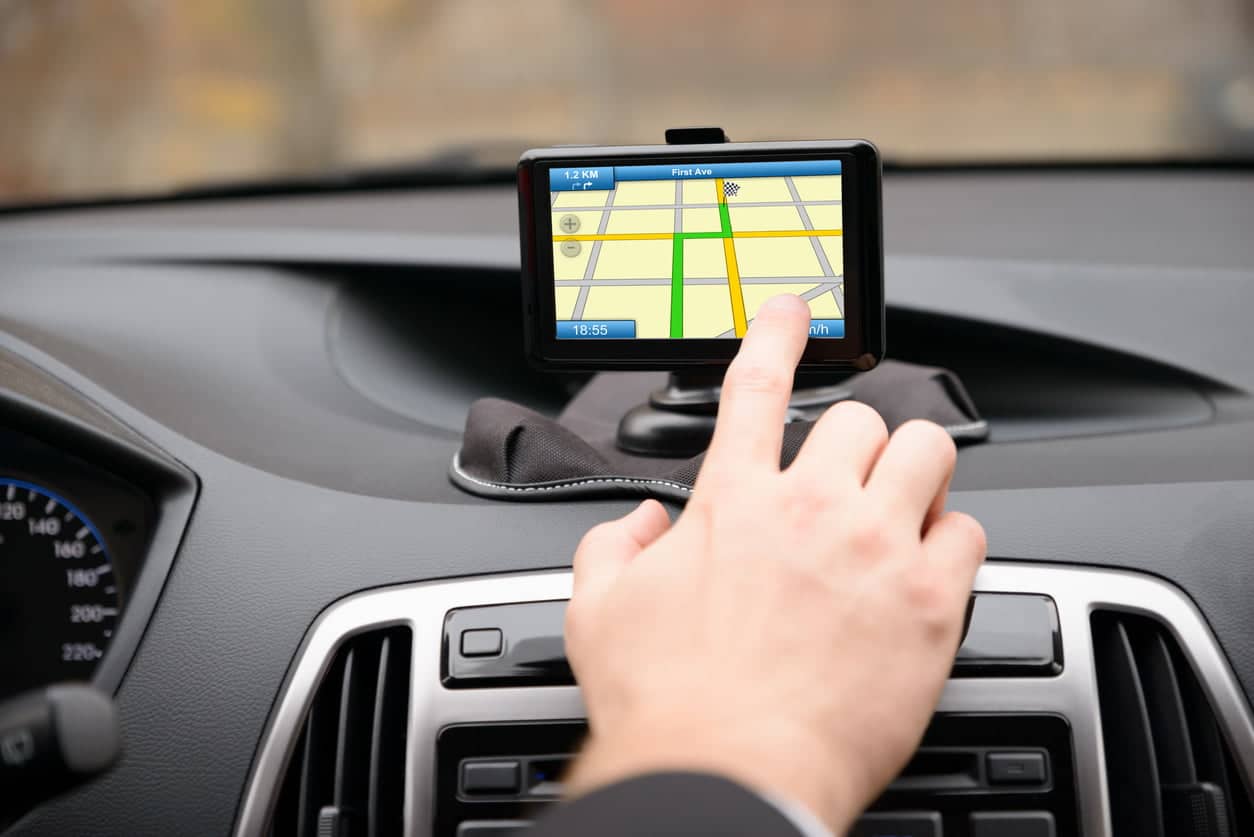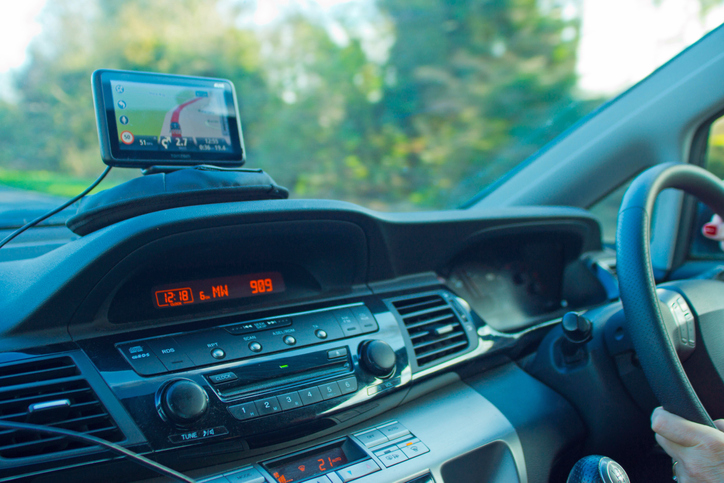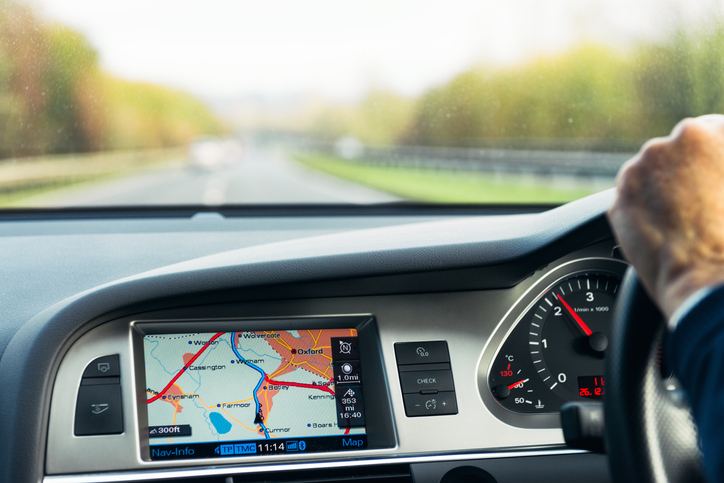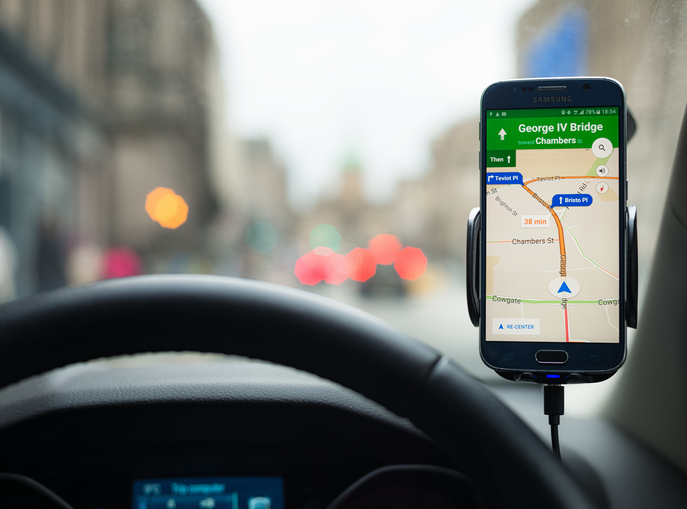
The capabilities of GPS apps and devices have improved a lot since they first arrived, with loads of new features and internet connectivity to guarantee better accuracy. But how do you go about choosing the right GPS for your car, and how do you make sure the product you choose stays up to date and working as well as possible?
In this guide, we’ll show you how to find the most reliable GPS for your car, and offer tips and advice on how to keep in-built navigation systems up to date.
[Quick links]:
- Best GPS Sat Navs for 2019
- Best Smartphone Navigation Apps for 2019
- How to Update an In-built GPS System
Best GPS Sat Navs for 2019
While many of us rely on a smartphone for in-car navigation, phones do have a downside compared to a traditional GPS device: they need to be connected to the internet, and this isn’t always possible in remote areas. Using a GPS app can also eat through your data and battery, so they’re not the best for long journeys.
 The other option is to use a GPS sat nav, which doesn’t need to be connected to the web to get you where you’re going. Here are three of the best aftermarket sat navs you can buy for your car in 2019.
The other option is to use a GPS sat nav, which doesn’t need to be connected to the web to get you where you’re going. Here are three of the best aftermarket sat navs you can buy for your car in 2019.
Garmin Drive Assist 51LMT–D:
If you do a lot of driving, the Garmin Drive Assist 51LMT–D is packed with helpful features like a 5” touch screen, DAB radio connectivity, live traffic information and voice recognition (for choosing another destination hands-free). It’s also fully updateable for life.
One of the best features of the Garmin Drive Assist 51LMT–D is the in-built dashcam function. This handy feature not only records accidents and dangerous driving, but also gives collision warnings – so it’s a great driver safety aid.
TomTom Go 6200:
Coming in at an inch bigger than the Garmin Drive Assist, the TomTom Go 6200 is another powerful and feature-packed sat nav that makes getting from A to B a breeze. TomTom have long been one of the leading names in sat nav tech, and it shows in the Go 6200; the device has some really well-thought-out features such as over-the-air Wi-Fi updates, Bluetooth connectivity and a slot for a sim card, so that you can access a range of connected services.
Lots of us use a smartphone app to plan out routes (like Google Maps) or check local traffic updates, and the TomTom’s connectivity options let you send these routes and updates directly to the device – so you don’t always have to rely on a route you’re not sure about.
Binatone A505:
Coming in at the inexpensive end of the sat nav market, the Binatone A505 is great if you want a cheap GPS device that just gets you there. And that’s not to say it doesn’t have any useful features; the device has lifetime map updates, speed camera location warnings and a 5” anti-glare touch screen, so we reckon it’s a snip for under £100.
Binatone is the third-largest sat nav manufacturer in the UK, so you can expect good performance and reliability from the A505. The device also features lane guidance, which is a really handy feature when you’re at a complicated junction or roundabout in an unfamiliar place.
Best Smartphone Navigation Apps for 2019
Google Maps is great; simple to use and pretty much all of us have it on our phones already so it’s convenient. But beyond Google Maps there are some other map apps which might give you more features depending on what you’re looking for. We take a look at a couple of the most popular ones:
TomTom Go:
Recognising the shift towards smartphones over traditional sat navs, TomTom has built its own phone app, and it’s easily one of the best on the market. It has all the features you get with Google Maps as well as a few extras, like the option to select handy waypoints on your route (a petrol station for example) without coming away from the main navigation screen.
Where TomTom Go really shines, though, is in its voice guidance; you can really tell that this is a company with years of experience in the in-car navigation industry. The in-built voice guide is clear and instructions are easy to follow, even without looking at the screen. It also repeats at junctions and roundabouts, so you always feel like you’re kept in the loop.
Waze:
The commuter’s choice for in-car navigation; Waze is a navigation app that lets users input real-time traffic information, helping others using the app to avoid traffic blackspots and unexpected jams. You can input messages into the live traffic feed using your voice, and it’s great to get accurate and up-to-date information from people in your area.
Elsewhere in the app, there are some really handy features. Whenever you input a destination, the app asks if you want parking when you get there, so it will adjust its route accordingly, saving you the hassle of searching for a spot. The route instructions are also clear and well-timed, and the app is good at picking out quieter routes that save on travel time.
How to Update an In-built GPS System
 When you buy a car with an in-built navigation system, the dealer will often tell you to bring it back to them around once a year so they can update the system’s software. But this isn’t always practical, and it could cost you money.
When you buy a car with an in-built navigation system, the dealer will often tell you to bring it back to them around once a year so they can update the system’s software. But this isn’t always practical, and it could cost you money.
The good news is that it’s easy to update the system yourself, provided you’re reasonably tech-savvy. Here are a few different tips on how to update the software on your in-car GPS system:
- View the original device instructions online – You may not have the instruction book for your car’s sat nav, but you should be able to view it online if you have the make and model information. The instruction book should take you step-by-step through the process of updating your device.
- Use Wi-Fi to download and install updates – Most new in-car GPS systems can connect to Wi-Fi, which will let you download and install updates provided that you have a good Wi-Fi connection. Park as close to your house as possible to connect to your home Wi-Fi and follow the onscreen instructions to update the device.
- Use a USB memory stick to download and install updates – If your car doesn’t have Wi-Fi connectivity, you’ll need to use a USB stick to install updates. Start by heading to the website of your sat nav’s manufacturer on a laptop or computer. Here, you should find an updates page with the latest software versions for your device. Download this data on to a USB memory stick and then plug that into your car’s USB port. The system will extract and install the latest software, so you’ll be up to date.
At Holts, we want to make life easier for drivers. That’s why our DIY car maintenance range is easy to use and can get you back on the road in minutes. For information on our complete product range, visit our homepage today.

